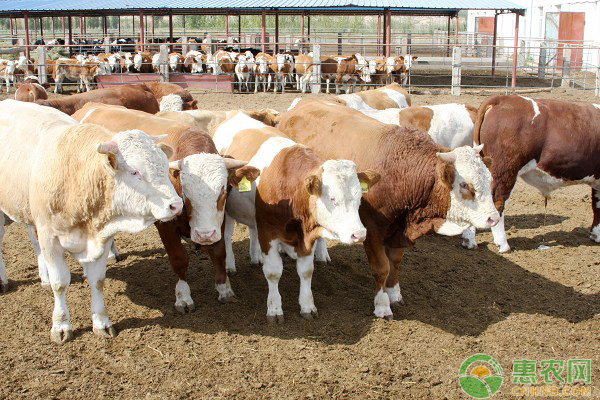Bovine viral diarrhea is a complex infectious disease caused by the flavivirus diarrhea virus of the Flaviviridae and Prionidae. This disease is also called bovine mucosa or BVBD. Mucosal viruses grow in large numbers in infected cattle, destroying the immune mechanism of the cattle themselves, causing malicious infection between the cattle. Worldwide, the disease has received widespread attention because the diarrhea virus can infect a wide variety of animals such as cattle, sheep, pigs, deer, etc., with a wide range of infections, and any direct or indirect contact This disease may be greatly spread. Therefore, farmers must pay attention to the symptoms of bovine diarrhea. The following small series will introduce the symptoms and prevention measures of bovine viral diarrhea in detail.

First, the diagnosis of bovine viral diarrhea:
1. Observation of clinical symptoms: Most cattle do not show clinical symptoms when they occur. Even if there are a few light cases in the herd, it sometimes causes sudden onset of the whole herd. For acute disease cow disease, the most typical symptom is that the body temperature rises to 40 to 42 ° C, and fecal water, odor, diarrhea with a lot of mucus and bubbles, and it lasts for about 1 to 3 weeks. Chronic diseased cows have intermittent diarrhea, which is characterized by weight loss, growth and development, and some limp. This type usually lasts for 2 to 5 months and is very long.
2. Anatomy and examination of dead cows: When dissecting dead cows, if the digestive tract, oral mucosa, esophagus, lymph nodes and the entire gastrointestinal mucosa are congested, hemorrhagic, edematous, erosive or edema of the entire digestive tract lymph nodes, then It is a typical symptom of bovine viral diarrhea. It is worth noting that in the diagnosis of this disease, it is necessary to carry out virus isolation, or to perform serum neutralization test and complement fixation test before it can be confirmed. Generally speaking, in practice, we often use the serum neutralization test method.
3. Types of bovine viral diarrhea
3.1 Acute bovine viral diarrhea
The symptoms of acute bovine viral diarrhea are that the virus enters the body with the respiratory tract and digestive tract as the main channels, and the virus is propagated on the sinus, mouth and intestinal mucosa. When the virus enters the bloodstream, it causes viremia.
3.2 Chronic bovine viral diarrhea
Cows with chronic bovine viral diarrhea, manifested as dysplasia, loss of appetite, and diarrhea is intermittent. In the process of diagnosis and treatment of this disease, it should be combined with the epidemic situation and targeted treatment.
Second, the mode of transmission:
Contact sexual transmission: Contact sexual transmission of bovine viral diarrhea includes two types, namely, direct contact and indirect contact. After cattle have toxic diarrhea, there are viruses in secretions, blood, excretions, etc., whether they are in direct contact or indirect contact, they will be infected with the disease.

Third, cattle viral diarrhea prevention measures:
1. Strengthen management work in infected areas
For cattle that have been infected with viral diarrhea, it is necessary to strengthen management and breeding work, strengthen management of infected areas, and treat them according to the condition of cattle to reduce the loss caused by bovine viral diarrhea. All cattle in the affected area should be fed antibiotics to improve the body's resistance and avoid bacterial infections. The environment of the infected area and the feeding tools should be disinfected regularly. No outsiders can enter the affected area to avoid stress on weaned cattle and transferred cattle. In the treatment, the method of separating the virus from the blood can be adopted, and the cattle with weak disease resistance and causing persistent viral infection can be eliminated in time.
2. Strict inspection of purchased cattle
For the cattle that are purchased, it is necessary to do a good job in health inspection, especially for cattle that are transported from other places. The quarantine work must be strict to avoid buying cattle with diseases. In particular, cattle that have persistent infection with cattle and viruses with viral diarrhea must not be purchased to avoid widespread spread of the virus.
3. Immunization measures for inactivated vaccine against cattle
Inactivated vaccine immunization measures are applied to cattle to avoid the spread of bovine viral diarrhea virus. The spread of bovine viral diarrhea virus is very fast, and cattle of different ages are infected, posing a threat to the cattle industry. For imported animals, strict quarantine is required to prevent the spread of the disease.

The above is about the introduction and prevention measures of bovine viral diarrhea. For bovine viral diarrhea, it is very difficult to find the root cause of the disease. To establish an effective method for radical cure, it is not ideal to use vaccine prevention alone. Only the establishment of systematic epidemic prevention measures is an effective way to avoid the spread of bovine viral diarrhea.
Butyl Rubber Stopper For Film Coated
We are a chinese origin manufacturer , we majored in producing rubber products for almost 10 years , which allows us to offer a wide range products for you . Our products now are widely used in clinical injection, transfusion and other packaging. We now have a 100-100000 class cleaning workshop which meets the GMP standard. From input to output, we have a strict quality control throughout the whole production line. We have full test instruments and tools according to the standard documents.
Butyl Rubber Stopper For Film Coated,Stopper For Film Coated,Silicone Rubber Stopper,Butyl Bottles Silicone Rubber Stopper
Suzhou CRH New Material Technology Co.,Ltd. , https://www.crh-health.com